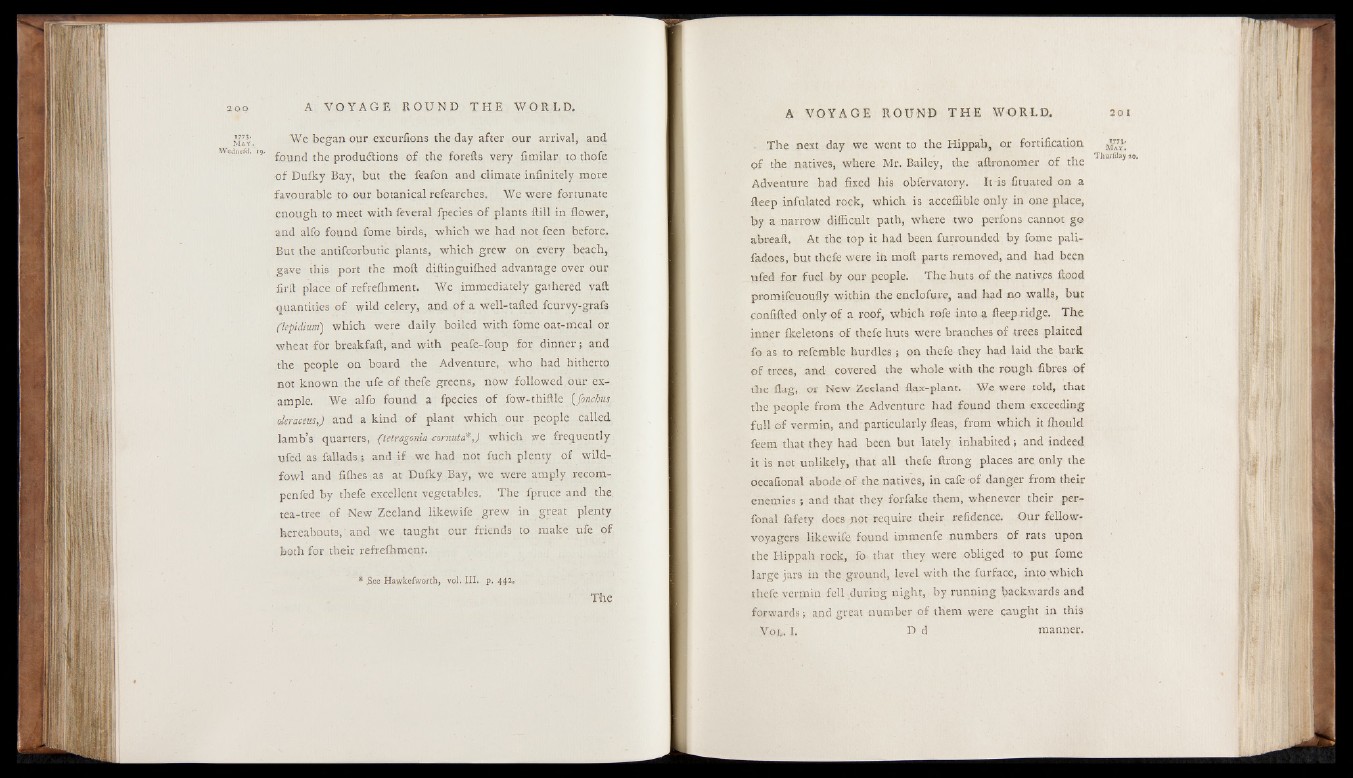
We began our excurfions the day after our arrival, and
found the productions of the forefts very fimilar to thofe
of Dulky Bay, but the feafon and climate infinitely more
favourable to our botanical refearches. We were fortunate
enough to meet with feveral fpecies of plants ftill in flower,
and alfo found fome birds, which we had not feen before.
But the antifcorbutic plants, which grew on every beach,
gave this port the moft diftinguifhed advantage over our
firft place of refrefhment. We immediately gathered vaft
quantities of wild celery, and of a well-tafted fcurvy-grafs
(kpidium) which were daily boiled with fome oat-meal or
wheat for breakfaft, and with peafe-foup for dinner; and
the people on board the Adventure, who had hitherto
not known the ufe of thefe greens, now followed our example.
We alfo found a fpecies of fow-thiftle {fonelus
deraceus,) and a kind of plant which our people called
lamb’s quarters, (tetragonia eornuta*,) which we frequently
ufed as fallads.; and if we had not fuch plenty of wildfowl
and fifhes as at Dufky Bay, we were amply recom-
penfed by thefe excellent vegetables. The fpruce and the.
tea-tree of New Zeeland likewife grew in great plenty
hereabouts,'and we taught our friends to make ufe of
both for their refrefhment.
* £ee Hawkefworth, vol. III. p. 442,
The
The next day we went to the Hippah, or fortification
of the natives, where Mr. Bailey, the aftronomer of the
Adventure had fixed his obfervatory. It is fituated on a
fteep infulated rock, which is acceffible only in one place,
by a narrow difficult path, where two perfons cannot go
abreaft. At the top it had been furrounded by fome pali-
fadoes, but thefe were ih moft parts removed, and had been
ufed for fuel by our people. The huts of the natives flood
promifcuoufly within the enclofure, and had no walls, but
confifted only of a roof, which rofe into a fteep ridge. The
inner fkeletons of thefe huts were branches of trees plaited
fo as to referable hurdles ; on thefe they had laid the bark
of trees, and covered the whole with the rough fibres of
the flag, or New Zeeland flax-plant. We were told, that
the people from the Adventure had found them exceeding
full of vermin, and particularly fleas, from which it fhould
feem that they had been but lately inhabited; and indeed
it is not unlikely, that all thefe ftrong places are only the
occafional abode of the natives, in cafe o f danger from their
enemies ; and that they forfake them, whenever their per-
fonal fafety does pot require their refidence. Our fellow-
voyagers likewife found immenfe numbers of rats upon
the Hippah rock, fo that they were obliged to put fome
large jars in the ground, level with the furface, into which
thefe vermin fell during night, by running backwards and
forwards; and great number of them were caught in this
Voi,. I. D d
vm- M a y .
Thurfday to .
manner.